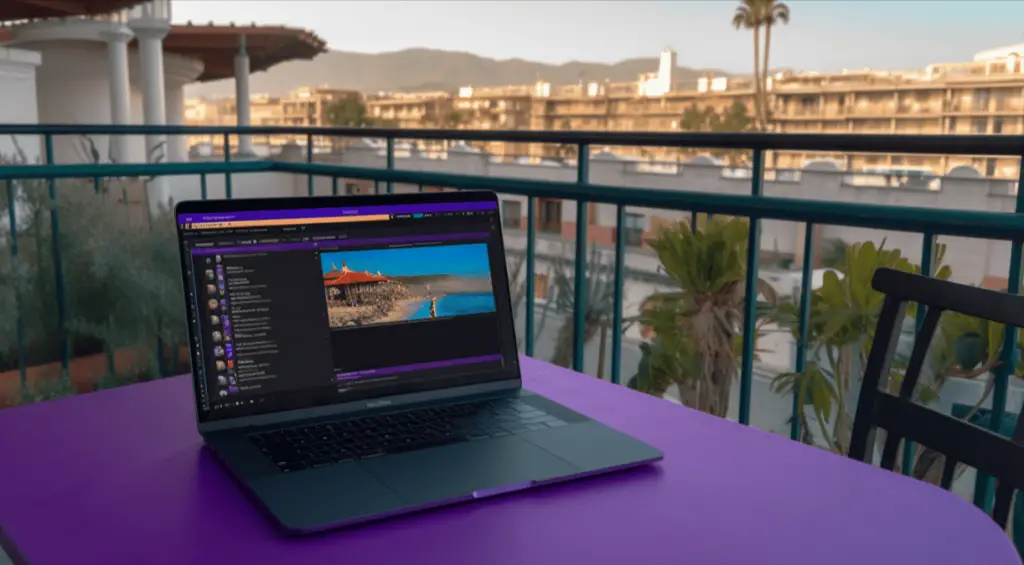Have you ever dreamed of cutting back on work hours to pursue your passions or travel the world, but you’re not quite ready to hang up your hat completely? You’re not alone. Many remote workers are discovering the beauty of semi-retirement. In this post, we’ll dive into what semi-retirement means, how to plan for it financially, and how it can enhance your life as a remote worker.
Benefits of Semi-Retirement
Semi-retirement is a phase in life when you’re not entirely retired, but you’re working less than a full-time job. This lifestyle can offer a range of benefits for remote workers, including:
- Greater work-life balance: By working part-time, you can free up time to explore new places, enjoy hobbies, and spend more time with friends and family. Semi-retirement can be a game-changer for those who have struggled to strike the right balance between work and personal life.
- Continued income stream: One of the biggest challenges of retirement is ensuring that you have enough money to sustain your lifestyle. With semi-retirement, you can continue earning an income while also enjoying the perks of a more relaxed schedule.
- Pursuing passions and hobbies: We all have those activities we’d love to try or spend more time doing, but our full-time jobs often get in the way. Semi-retirement can give you the flexibility to pursue your passions and hobbies, whether it’s painting, learning a new language, or writing that novel you’ve always dreamed of.
Financial Planning for Semi-Retirement
Semi-retirement may sound like a dream come true, but it’s essential to plan for it financially. Here are a few steps to help you prepare:
- Assess your financial needs: Before you can start planning, you need to have a clear understanding of your financial needs during semi-retirement. This includes your daily living expenses, travel costs, and any other expenses you might incur.
- Diversify your income sources: Relying solely on one source of income can be risky. To ensure financial stability, consider diversifying your income sources, such as through investments, freelance work, or even starting a small business.
- Budgeting for digital nomads: Travelling while working remotely can bring its own set of financial challenges. It’s important to create a budget that accounts for your lifestyle as a digital nomad. Check out our guide on budgeting methodologies for digital nomads to help you get started.
With careful planning and consideration, you can set yourself up for a successful and fulfilling semi-retirement. In the next sections, we’ll explore how to balance part-time work and travel, find suitable remote work opportunities, and more!
Working Part-Time While Travelling
Let’s take a look at a helpful anecdote about a 60-year-old named Janet, who is planning on travelling while working part-time. Janet, a former teacher, decided to take the plunge into semi-retirement after years of dreaming about exploring the world. She found a part-time remote job as an online tutor and set out on her adventure.
By working 20 hours per week, Janet is able to maintain a steady income while also having ample time to immerse herself in new cultures and experiences. She carefully balances her work schedule with her travel plans, making sure she has reliable internet access and a comfortable workspace at each destination.

The key to successfully working part-time while travelling is finding the right balance between your professional and personal life. You’ll need to manage your time wisely and ensure you have the tools and resources needed to stay productive on the go.
Finding Suitable Remote Work Opportunities
As you plan for semi-retirement, you’ll need to explore remote work opportunities that fit your skills and interests. Here are some options to consider:
- Overnight remote jobs: For those who prefer working during unconventional hours, overnight remote jobs can be a perfect fit. They often offer more flexibility and can be ideal for travelers who want to explore during the day and work at night. Check out our list of overnight remote jobs to see if there’s a position that suits your needs.
- Jobs for former teachers: If you’re a former teacher like Janet, there are plenty of remote work opportunities available. Online tutoring, curriculum development, and instructional design are just a few examples of remote roles for educators. Visit our post on jobs for former teachers to discover more options.
- Other in-demand remote jobs: The world of remote work is vast, and there’s likely a position that aligns with your skills and interests. Web development, graphic design, customer support, and writing are all popular remote work fields. Keep an eye out for job boards and networking opportunities to find the perfect remote role for your semi-retirement.
By finding the right remote work opportunity, you can seamlessly transition into semi-retirement and enjoy the benefits of a part-time work schedule while travelling the world.
The Semi-Nomadic Lifestyle and Remote Work Setups
Embracing semi-retirement often goes hand-in-hand with adopting a semi-nomadic lifestyle, as you move from one destination to another while working part-time. It’s essential to have a comfortable and functional remote work setup to maintain productivity during your travels.
- What is a semi-nomadic lifestyle?: A semi-nomadic lifestyle involves regularly changing locations while maintaining a remote work routine. This allows you to experience different cultures and environments while continuing to earn an income. Learn more about this lifestyle in our article on what a semi-nomadic lifestyle entails.
- Floor-sitting desks for comfortable remote work: As a semi-retiree travelling the world, you’ll need a comfortable and portable workspace. Floor-sitting desks can be an excellent solution, as they’re lightweight and easy to set up in various locations. Check out our recommendations for the best floor-sitting desks for remote workers on the go.
- Co-working vs. traditional office space: Depending on your preferences and work needs, you might choose between co-working spaces or more traditional office setups. Coworking spaces can provide a sense of community and networking opportunities, while traditional office spaces might offer more privacy and structure. Read our comparison of coworking vs. traditional office spaces to determine which is right for you.

Managing Digital Burnout in Semi-Retirement
While semi-retirement offers many benefits, it’s essential to be mindful of digital burnout. Spending hours in front of screens and constantly being connected can take a toll on your mental and physical health.
- Importance of self-care: Prioritize self-care and take breaks when needed. Make sure to set aside time for relaxation, exercise, and socializing to maintain a healthy work-life balance.
- How to manage digital burnout while working remotely: Recognizing the signs of digital burnout and taking steps to manage it are crucial in semi-retirement. We’ve compiled some tips and strategies on how to manage digital burnout while working remotely to help you stay healthy and engaged in your work and personal life.
Accommodation Options for Traveling Semi-Retirees
As a semi-retiree on the move, finding suitable accommodations is crucial for both your comfort and productivity. Here are some options to consider:
- Hostel vs. Airbnb: Both hostels and Airbnbs offer unique benefits for travelers. Hostels are generally more affordable and provide opportunities to socialize with fellow travelers, while Airbnbs can offer more privacy and a homier feel. Read our comparison of hostel vs. Airbnb to help you decide which is the better choice for your needs.
- Hostel vs. Hotel: If you’re considering a more traditional accommodation option, you might be weighing the pros and cons of hostels and hotels. Hostels can be budget-friendly and social, while hotels often provide more amenities and comfort. Check out our article comparing hostel vs. hotel to make an informed decision.
Ultimately, the best accommodation option for you will depend on your personal preferences, budget, and work requirements. Exploring various options can help you find the perfect home-away-from-home during your semi-retirement travels.
Essential Tools for Remote Workers in Semi-Retirement
As a remote worker in semi-retirement, having the right tools at your disposal is crucial for staying productive and connected. Here are some essentials to consider:
- Best laptops for digital nomads: A reliable and portable laptop is a must-have for any remote worker on the go. We’ve compiled a list of the best laptops for digital nomads to help you find the perfect device for your needs.
- Best digital nomad backpacks: Carrying your gear from one destination to another requires a durable and functional backpack. Check out our recommendations for the best digital nomad backpacks to keep your belongings safe and organized.
Establishing Routines and Hobbies
Creating routines and incorporating hobbies into your semi-retirement can help you maintain a sense of balance and fulfillment:
- Routines for working from home: Even while traveling, establishing a routine can help you stay productive and focused. Visit our post on 3 routines for working from home for inspiration on creating a schedule that works for you.
- Hobbies for digital nomads: Embracing new hobbies or continuing existing ones can enrich your life during semi-retirement. From photography to language learning, our list of hobbies for digital nomads offers a variety of ideas to keep you engaged and entertained.
Conclusion
Semi-retirement can be an exciting and rewarding phase of life, offering the perfect blend of work and leisure. By planning financially, finding the right remote work opportunities, and embracing a semi-nomadic lifestyle, you can make the most of this unique experience. Remember to manage digital burnout, explore various accommodation options, and invest in essential tools for remote work. Here’s to a fulfilling and adventurous semi-retirement!
FAQ
Q: What is the ideal age for semi-retirement?
A: Unfortunately, there is no one-size-fits-all answer to this question. The ideal age for semi-retirement depends on your personal circumstances, financial stability, and individual goals.
Q: Can I still save for my full retirement while in semi-retirement?
A: Yes, you can still save for full retirement during semi-retirement. By continuing to work part-time, you can maintain an income stream that allows you to contribute to your retirement savings.
Q: How do I maintain health insurance while traveling during semi-retirement?
A: It’s essential to have proper health insurance coverage while traveling. Research international health insurance plans or travel insurance policies that include medical coverage to ensure you’re protected during your travels.
Q: Is semi-retirement right for me?
A: This is a personal decision that depends on your financial situation, work preferences, and lifestyle goals. If you value having a balance between work and leisure and have the means to support a semi-retirement lifestyle, it may be the perfect choice for you.
Jared has worked remotely for 15 years in various marketing capacities, and has managed hundreds of marketing campaigns along the way. He has held freelance, agency, and in-house positions for companies large and small.


